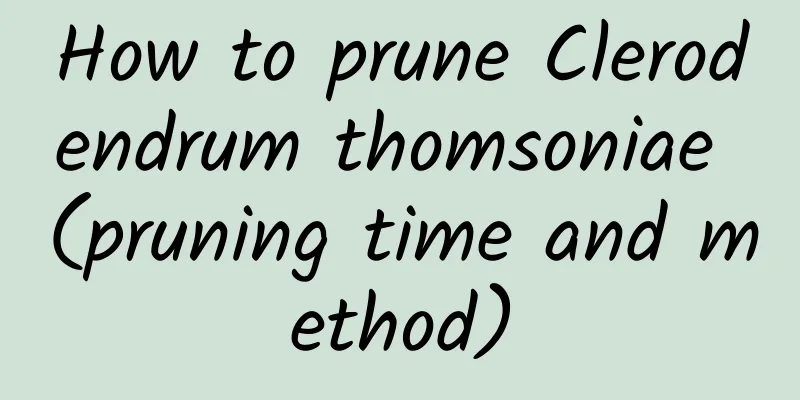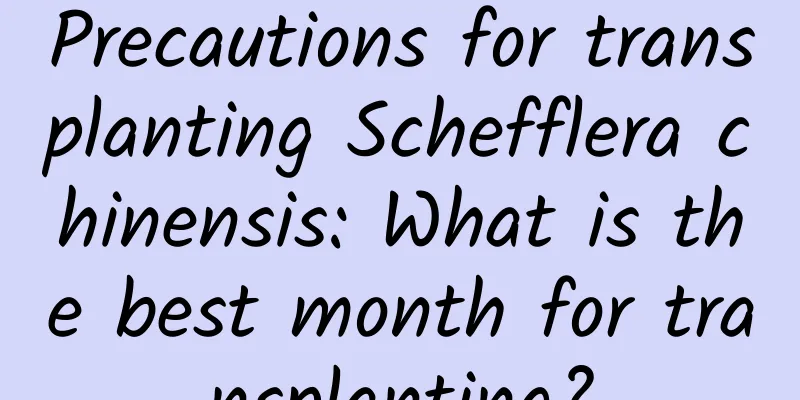What kind of soil is better for growing flowers?

|
Different flowers have different requirements for soil, such as loose and breathable, sticky, sandy, humus-rich, acidic soil , etc. When cultivating, you should choose suitable soil that is conducive to the development of the flower root system and the growth of the plant. So what kind of soil is better for planting flowers? Let’s take a look below. 1. What kind of soil is better for growing flowers? 1. Leaf mold: It is made from the accumulation of decomposed fallen leaves. It is rich in humus, loose and fertile, and has good air permeability. It is the soil that most flowers like. 2. Peat soil: It has good water retention and air permeability, contains rich organic matter, and is often used as the main substrate for flower cultivation. 3. Garden soil: This is the soil in the garden. It has good fertility, but may be compacted and has poor air permeability. It is usually mixed with other substrates when used. 4. Pine needle soil: It is acidic and highly breathable, suitable for flowers that prefer acidic soil, such as orchids, azaleas, etc. 5. Perlite : It is a lightweight mineral that increases soil permeability and drainage and is often mixed with other soils. 6. Vermiculite: It has good water retention and air permeability, which helps plants to take root. 7. Coconut bran: Good water retention and air permeability, needs to be used with other substrates. Generally speaking, according to the characteristics and growth needs of the flowers being planted, the above-mentioned soils can be mixed in a certain proportion to achieve the best cultivation effect. For example, for most common flowers, you can mix leaf mold, garden soil and river sand in a ratio of 4:4:2. 2. Soil types suitable for common flowers 1. Succulent plants : suitable for soil with good drainage and strong air permeability. You can mix peat soil, perlite and vermiculite in a ratio of 3:1:1, or you can add some coarse sand or medical stone . 2. Orchid: It likes loose, breathable, well-drained and slightly acidic soil rich in humus. Commonly used planting materials are a mixture of pine bark, peanut shells , perlite, and leaf mold. 3. Rose: Suitable for growing in fertile, loose, well-drained slightly acidic soil. You can mix garden soil, leaf mold and river sand in a ratio of 5:3:2. 4. Clivia: It is suitable to use soil prepared with leaf mold, pine needles, river sand and charcoal in the ratio of 6:2:1:1. 5. Jasmine : It likes slightly acidic soil. You can mix garden soil, leaf mold and river sand in a ratio of 4:4:2. 6. Pothos: It is not demanding on soil, but it grows better in loose, fertile, well-drained leaf mold or peat soil. 7. Chrysanthemum: It is suitable for growing in fertile, well-drained sandy loam. It can be mixed with leaf mold, garden soil and river sand in a ratio of 4:3:3. 8. Gardenia: It likes acidic soil. You can mix peat soil, leaf mold and coarse sand in a ratio of 4:4:2, and add a small amount of sulfur powder to adjust the pH of the soil. The above is an introduction to what kind of soil is better for growing flowers. It should be noted that the soil and climate conditions in different regions will also have an impact. You can make appropriate adjustments to the soil formula based on actual conditions.
|
<<: Camellia cultivation methods and precautions
>>: What kind of pesticides are needed for fig tree cultivation?
Recommend
Rhododendron pests and control methods
Azalea Pests - Red Spider Mites Red spider mites ...
What is the best month to plant autumn eggplant?
When to plant autumn eggplant Autumn eggplant is ...
What fertilizer is good for radish?
Overview of black pine fertilization If you want ...
When to repot potted lotus
Time to repot potted lotus There is actually no f...
Tiger Pilan cultivation methods and precautions
1. Soil It is recommended to use loose, fertile, ...
Farming management before and after the winter solstice
During the winter solstice, the average temperatu...
What is the flower-raising white medicine?
1. What is The small white medicine used for grow...
What are the medicinal effects of kapok bark? Kapok tree pictures
1. Treatment of waist and knee pain Kapok bark ha...
Where do cacti grow? Where do they like to grow?
Where do cacti like to grow? Cacti generally like...
How long to water the tiger skin plant after repotting
1. Do not water immediately During the process of...
How to prevent plants from lacking water in summer
Be careful not to water at noon Noon is when the ...
Cultivation methods and precautions of red plum trees Precautions for transplanting red plum trees
The red plum tree is relatively easy to maintain....
Can carbendazim be used to water anthurium?
Can Anthurium be watered with carbendazim General...
Watermelon and cucumber... No need to buy them anymore, just grow some on the balcony and you can eat more
Growing watermelons on the balcony Planting time:...
How to save the seeds of Huang Guniang fruit
Yellow lady fruit seeds The yellow lady fruit is ...









